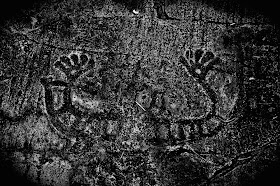Sign up for the elements newsletter
The Norse and the afterlife
Introduction
One of the most important objectives for me developing The Elements is that each book is not regarded as ‘just a continuation of a story’. The Element themes is one way of creating something unique in a larger whole. As are the shift in which character comes to the fore. Just as importantly, and in many ways the raison d’étre though, is the unique blend of setting - and ‘thrust’. By thrust, I mean that core framework of ideas, historical precedents and beliefs of the characters past and present. This first of a series of blogs explores the background for He Who Favors Fire, is concerned with the mythological backdrop of Nordic mythology, coupled to local legends and the beliefs of some local characters with a thing or two to say about. This is the first of 3 blogs looking at Nordic Legends and Beliefs.
One only has to drive around Denmark, Sweden and Norway to find ancient places, bogs of sacrifice, burial mounds, runestones - all commemorating the dead. The concept of Nordic death was something very different than a Christian, Jewish of Islamic one. Death was part of life: In many ways, it was a society based on a system of belief concerning the dead and the gods who ruled the realms between which man passed in life and death.
The late iron-age people of Scandinavia well before and in Viking times believed each tree, each rock had a spirit attached to it. These beliefs only died with Christianization and continued reputedly until as late as the 18th century. Some of these beliefs can still be glimpsed today in those sagas left to us, words transcribed into books. Books providing inspiration for fantasy; fantasy feeding fiction. Delve a little deeper and a whole world awaits discovery.
Nordic Beliefs & Landscape
For the Norse, the concept of the afterlife was a very real part of the lives of people for whom superstition was a way of life. This was a world that has fostered places and creatures in nothing less than Tolkien's The Lord Of The Rings - the landscape being the embodiment of the seasons, darkness and light. Cold and isolation. The grave is often described as an abode for the dead, and it was also the location of rites. The tradition of putting out food and beer on the tumulus has survived into modern times, in some parts of Scandinavia. This tradition is a remainder of the ancestor worship that was common during early Norse culture. If the dead were taken care of, they would in return protect the homestead and its people, and provide for its fertility.
The Cult of the Ancestor
The ancestor worship of the Norse had at its core that part of the soul stays in the underworld, representing the person in spiritual form, becoming an ancestor. The living are able to communicate with the ancestor at any time in a person’s lifetime. This common to the pre-christian Germanic world-view where the boundaries between the soul and the environment of which it is part are not separate.
The journey to the underworld
What was a central aspect of the belief of the Norse was a tradition of belief concerning the journey of the deceased - a voyage to the realm of the dead, a realm which could be situated inside a mountain, on the other side of the sea, in the heavens or in the underworld. We can only speculate since the sagas that have come down to us, mostly from Icelandic sources, are only fragmentary. Scholars do not have any answers to the question whether the dead would remain for some time in the grave and later depart for the realm of the dead, what the purpose of the grave goods was, or if the ship in the barrow was to transport the deceased to the realm of the dead.
The boat and the afterlife
We do know that the tradition for ancestor worship and the afterlife was a rich part of the bronze-age peoples trading and partaking in rituals all along the Swedish-Norwegian coastline. This is evident in the many - now inland - rock carvings, that at that time in the Bronze Age would have been inland coastal waters, a shallow fjordland of rocky promontory and trading settlements. The veneration of the ship and the symbological journey can still be seen today in the various sites in Sweden and Norway still there though the waters have now receded and the ocean level lower now compared to the bronze age.
In succeeding centuries the sea level continued to drop, leading to the emergence of larger swathes of land coinciding with deteriorating climatic conditions, and a subsequent period of hardship. Hardship and isolation replaced the days of plenty and it was not until the beginning of the 1st millennium AD that Scandinavia resumed contact with the rest of Europe. This period - the pre-Viking to Viking Age - was the Golden Age in the period AD 400 to the end of the Viking period in the eleventh century.
In the next blogs in this series I will explore legends concerning the dead that have provided core source material for the development of the Prolgue to the series, Beyond The Light Of Reason where a murder is committed resembling the rituals of old, part of a complex puzzle involving a mysterious painting of the past and dark forces in motion.
These blogs are work in progress.
Links: Norse mythology org
Tanum: http://whc.unesco.org/en/list/557












No comments:
Post a Comment